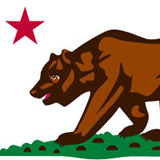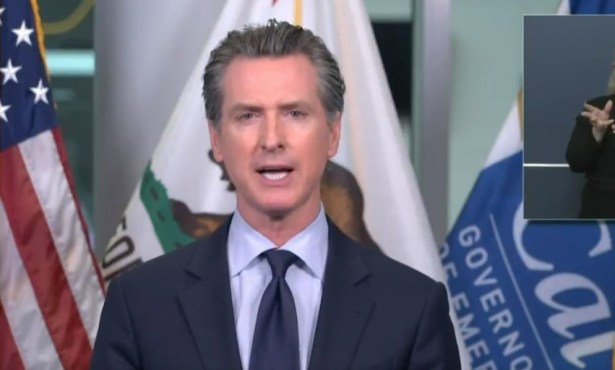California, Excommunicated
Once Again, Golden State Voters Move Decidedly in Their Own Direction
For most Californians, election night’s most annoying experience almost certainly was being forced to listen to the winners incessantly bray about the “Voice of the American People.”
From the orange-tinted, Speaker-to-be John Boehner to the red-white-and-blue-clad, wannabe president Sarah Palin, giddy Republicans couldn’t stop jabbering about how “the American People have spoken” and “the American People have sent a message,” and about how all this speaking and message-sending proved conclusively that the GOP was right all along about everything.

This just in: “American People” club boots 37-million residents of California.
On a night when Republicans seized control of the House of Representatives, ousted a record number of incumbent Democrats, and prepared to install a batch of conservative, white, male, Obama-hating, climate-science-denying congressional leaders, it turns out, the American People of California demurred.
To say Golden State voters chose a different political path is sort of like describing Lady Gaga as a real sharp dresser: State Democrats bucked national trends in dominating the state ballot from top to bottom, as voters picked 72-year-old career politician Jerry Brown as governor, reelected the three-term, liberal Senator Barbara Boxer, and froze Republicans out of virtually every statewide office (the count for Attorney General is still going). They also returned to Congress almost every Democratic incumbent (two districts still counting), increased the party’s majority numbers in the Legislature, and delivered the most resounding message of the night by defeating Proposition 23, which was aimed at rolling back California’s landmark climate change law; the “no” side on the measure won more votes than any candidate or item on the ballot (4,929,625 at press time).
Here are some key factors why California went bright blue while the rest of the country went angry red:
• Latinos: It’s hard to overstate the importance of the Latino vote, both in last Tuesday’s election and in the longer political term. Long derided as “the sleeping giant” of California, Latinos were 22 percent of the overall vote, a record. That still fell short of the group’s 33-percent slice of the adult population, but it topped the 18 percent who voted in the 2008 presidential election and far exceeded the 12-percent portion in the 2006 midterms. Exit polls showed that Latinos overwhelmingly favored Democrats, in a year when illegal immigration was a major issue, supporting Brown over Meg Whitman and Boxer over Carly Fiorina by two-to-one margins.
• Women: This was supposed to be the year when California Republicans made gains among women voters after choosing female nominees for the top two slots on their statewide ticket. But former CEOs Whitman and Fiorina both lost by 16 points among women to their Democratic rivals, according to exit surveys. Among other things, this showed that partisan leaning is a better predictor of voter behavior than gender; only 31 percent of women in the poll described themselves as conservative, compared to 35 percent of men, while 30 percent called themselves liberal, compared to just 24 percent of men.
• Base: There was much national, preelection commentary about the “enthusiasm gap” between the two parties. The conventional wisdom that Republicans would turn out in greater numbers proved true elsewhere, but not in California. Final party breakdowns are not yet available, but it was clear on election day that despite all the talk about Whitman’s vaunted $18-million get-out-the-vote operation, it was the state Democratic party that had the most aggressive and effective ground operation, taking advantage of its big edge over the GOP in registration. And organized labor, another key element of the Democratic base, played a crucial role, spending more than $20 million on various “independent expenditure” committees that benefited Brown with advertising, mailers, and turnout.
Although California represents one-eighth of the nation’s population, not much about the state’s election made its way into the newly minted conventional wisdom of the Beltway chattering class, which focused heavily on the Republican House wipeout portending doom for Obama. It remains to be seen whether California’s 2010 results ultimately establish the state as a true outlier of mainstream political views or a harbinger of trends to come in 2012 and beyond.
For now, the best guide to explaining and understanding what happened on Tuesday is probably the “Law of the Infinite Cornucopia,” a principle propounded by the late Polish philosopher Leszek Kolakowski. As cited by the New York Times, in an arch, instant analysis of all the, um, instant analyses of the election, Kolakowski “stated that there was never a shortage of arguments to support any doctrine one wanted to believe in for whatever reasons.”
Just ask the American people.



